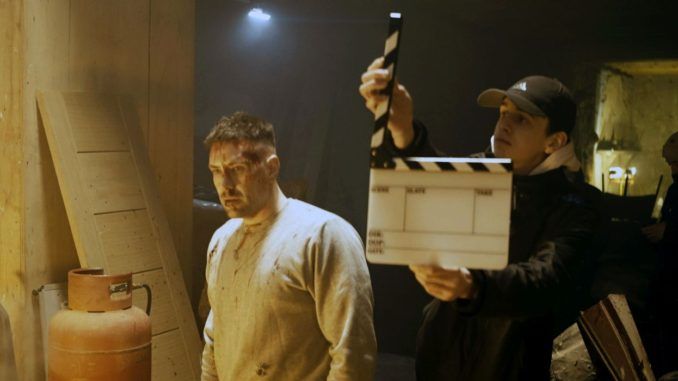
The last time we spoke to Scottish director Nathan Shepka, was back in 2023, and he was just coming off the release of action comedy Lock & Load. There, he talked about his next projects being a gritty thriller about sex trafficking, and period horror/drama, The Baby in the Basket. Those two productions are now safely in the can, and coincidentally, both are about to hit your screen, just a few weeks apart. So it seemed like a good opportunity to check in with a man who might well be turning into Scotland’s biggest genre director…
Below, Nathan discusses the inspirations behind Dead Before They Wake and Baby in the Basket, his ongoing battle with Scottish weather, and Patrick Bergin’s Scottish roots. You’ll also find reviews of both films.
You’ve got a pair of films released just a couple of months apart. How did you juggle the two productions?
There was actually a point towards the end of production that both films were shooting back-to-back. On The Baby in the Basket, we had to rip the bandaid off and do it pretty much in a oner because we flew the vast majority of the cast in. For Dead Before They Wake, we had a little more time with and shot it over a longer period. It was just a case of switching hats most of the time!
What inspired you to create Dead Before They Wake?
We were actually due to shoot this film a while ago: the script had been around for a few years, but then lockdown hit and it wasn’t feasible, so we switched to a slow burn mystery thriller, When Darkness Falls. I was inspired by the sex trafficking rings that had been exposed in the UK in recent years, and the film ended up being quite timely as they have just hit headlines again! In a way I’m glad that we waited to film it, because we probably (hopefully!) improved as filmmakers in the interim and were better placed to do it justice. The actual structure of how the trafficking rings operate, I took a lot from news articles on the grooming gangs. I also took a lot of inspiration from the BBC mini-series Three Girls, which was based on the gangs.
Fiction wise, I took some inspiration from You Were Never Really Here starring Joaquin Phoenix – directed by another Scottish director, who wishes she was as famous as me! – both in terms of the style and tone. I did feel the need to commercialise Dead Before They Wake more though with some added action, because we don’t have the draw of Pheonix. That, and I felt the audience would really want to see a brutal payoff after seeing the atrocities committed by the villains. We had to be careful there, especially with race – I know that the grooming gangs they are based on were overwhelmingly a certain race, but you have to think about distribution and getting picked up, as well as trying to portray the reality. It wasn’t a racist or political or right-wing statement we were trying to make, we just wanted to base it on true events.
It feels like it came together quite quickly. Was that the case, and how did you get Patrick Bergin on board?
We didn’t go out to press or anything with Dead Before They Wake until it was ready, I think we spent around 12 months shooting and trying to fit in scenes – so it has probably been hovering in the shadows for longer than you think. The script was one I probably did more re-drafts than normal, again because that had been around for a while – you always re-visit things and go ‘what was I thinking there?’ Sometimes time away can help you see something with fresh eyes. I made a shortlist (well, not so short!) of actors I thought would be good for Evan and Holden. Patrick Bergin was great in Sleeping With the Enemy, he’s got a great voice/accent, great expressions and I thought he could bring a nice sinister air to the role. I just contacted his agent, sent the script and Patrick said he’d play the role. Actually, he partially grew up in Glasgow and when I picked him up at the airport he asked that I drive him around some of his old haunts or places he’d recognise, so that was cool.
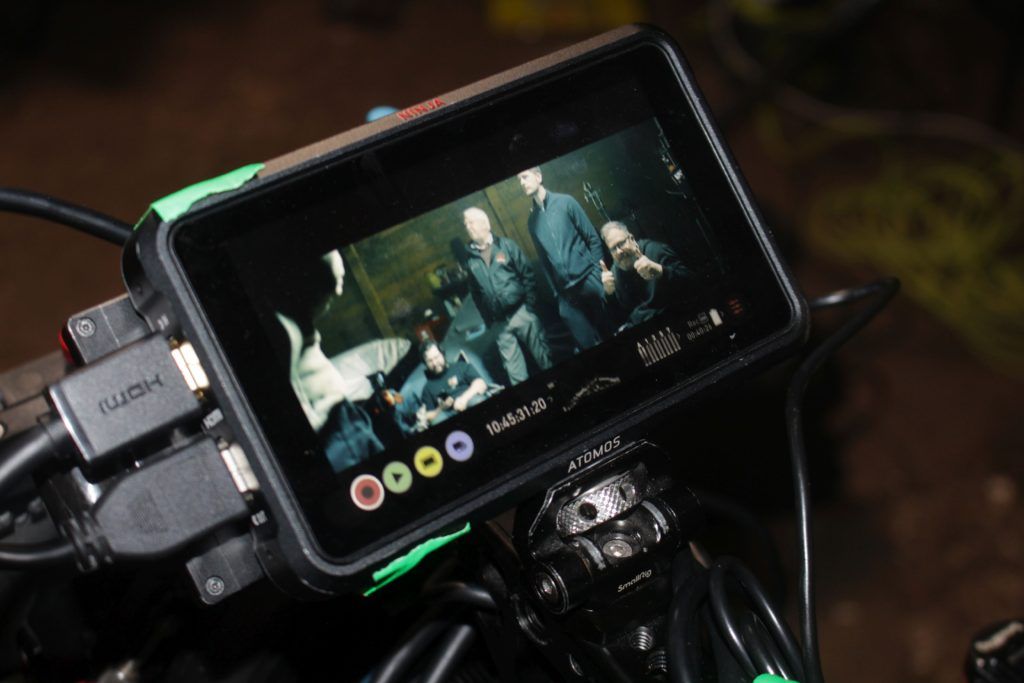 This is a lot grittier than things like Lock & Load. Was it difficult for you – as actor or director – to go into those darker places?
This is a lot grittier than things like Lock & Load. Was it difficult for you – as actor or director – to go into those darker places?
I think that the R-rated, violent, adult revenge thriller is making a bit of a comeback
Andy Crane moved up from cinematographer to co-director. How does having two directors work, and what did you each bring to the table?
That was a request by Andy himself, and to be honest I felt that was more than fair; we work really well together and both contribute equally. We’re good at bouncing ideas off each other both in terms of visual style and in terms of acting choices. The good thing with Andy is, sometimes I’m trying to wear so many hats, I can’t see something either in my own performance or just generally regarding the script or scene, and so it’s great having someone else there to either critique me or give me notes. He also has the same sense of humour as me so working together is never a chore. Although he’ll always be the first to laugh at me if he thinks something I’m doing is mental. Thanks, Andy!
Sex trafficking rings are clearly a very topical and sensitive subject right now in Britain. How has the reaction been to the film?
I think that a few reviewers and sites have fortunately linked it to the grooming gangs in the UK, so it is good that they made the connection. We’ve been pushing the harrowing and “based on true events” label a bit. People have been saying they were on the edge of their seat, disturbed by it, that it was raw and unflinching, that it was gritty even for them. I take all of that as a positive though, because we didn’t intend it to be an easy watch. It goes on, and the media has been highlighting it constantly, so I feel it’s also fine for a feature film to do the same. Audience reaction – it is a little too early to tell, so we’ll see! Generally though critics are pretty good at understanding what we’re going for and that’s always a relief.
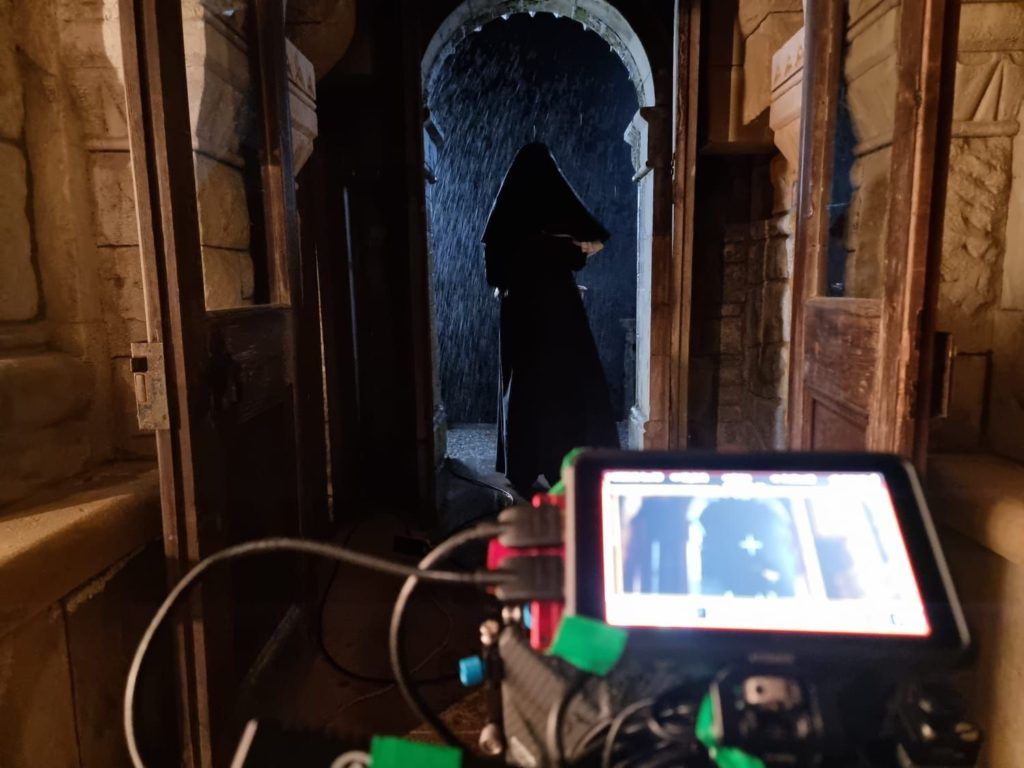 It’s been almost two years since the Baby in the Basket Kickstarter. What were the biggest challenges you faced bringing it to the screen?
It’s been almost two years since the Baby in the Basket Kickstarter. What were the biggest challenges you faced bringing it to the screen?
Scheduling was difficult! It’s one of the things that you pore over for hours, you think you have perfect and then someone throws a spanner in the works. I’d say that likely the biggest challenge was getting everyone together, coordinating that, and trying not to have someone sitting around waiting for a few days in between their scenes. The cast that we had for The Baby in the Basket were (respectfully) more in-demand than some of the films we’ve done in the past. Secondary to that – although not by much! – was the ever-reliable Scottish weather. We had flooding sets, flooding roads, landslides, aborted days, extreme wind -and not just from the cooked breakfasts. It was shot in Autumn but it was a particularly bad period for weather. We shot it on the West coast of Scotland and as well as it being the perfect setting and time of year for the film, it got extremely hairy on the roads at times even travelling to and from location.
The location for the film is great. How did you find it?
The location for the main convent was actually suggested to me by my friend Carol, who goes on a lot of coach trips to different areas of Scotland because she loves photography. I looked it up online and thought it was absolutely perfect. It was grand, sat next to the water, gothic, interesting and just generally an absolute dream. I didn’t think there was any way we’d get it. But we did. And I can’t think of another location that would have looked better or fitted the script more.
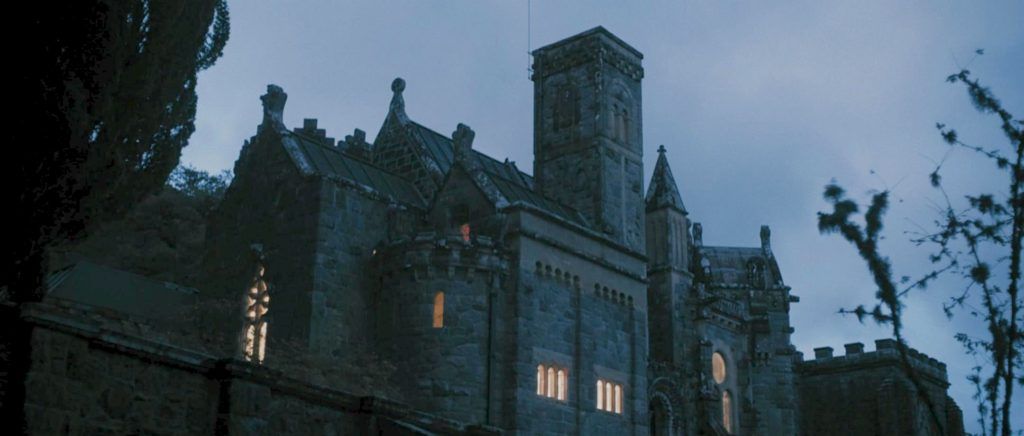 It’s your first period production. Did that pose any difficulties?
It’s your first period production. Did that pose any difficulties?
We had flooding sets, flooding roads, landslides, aborted days, extreme wind…
What’s next? Presumably after some well-deserved rest!
At this point in time we have a couple of different films in the works that we’re hoping to get off the ground soon. Investment is difficult right now and the film industry (especially the indie sector) is a real mess. Without going into too much detail there are far too many films being made, which is good in one way but means there is more competition and the same revenue spread between more films. It is difficult to stand out, especially without a huge marketing budget. So we need to be calculated in our next steps. Consumers have too much choice and too much choice is worse than too little in the cast of the film industry. One thing I know though, is that I’d like to continually progress. Whether that’s overall quality, production value, acting and even the people we get to work with, it would be nice to keep taking a step up, especially in a time where it is difficult not to get stuck treading water. Let us be a small fish in a bigger pond rather than the other way around, then we have room to grow!
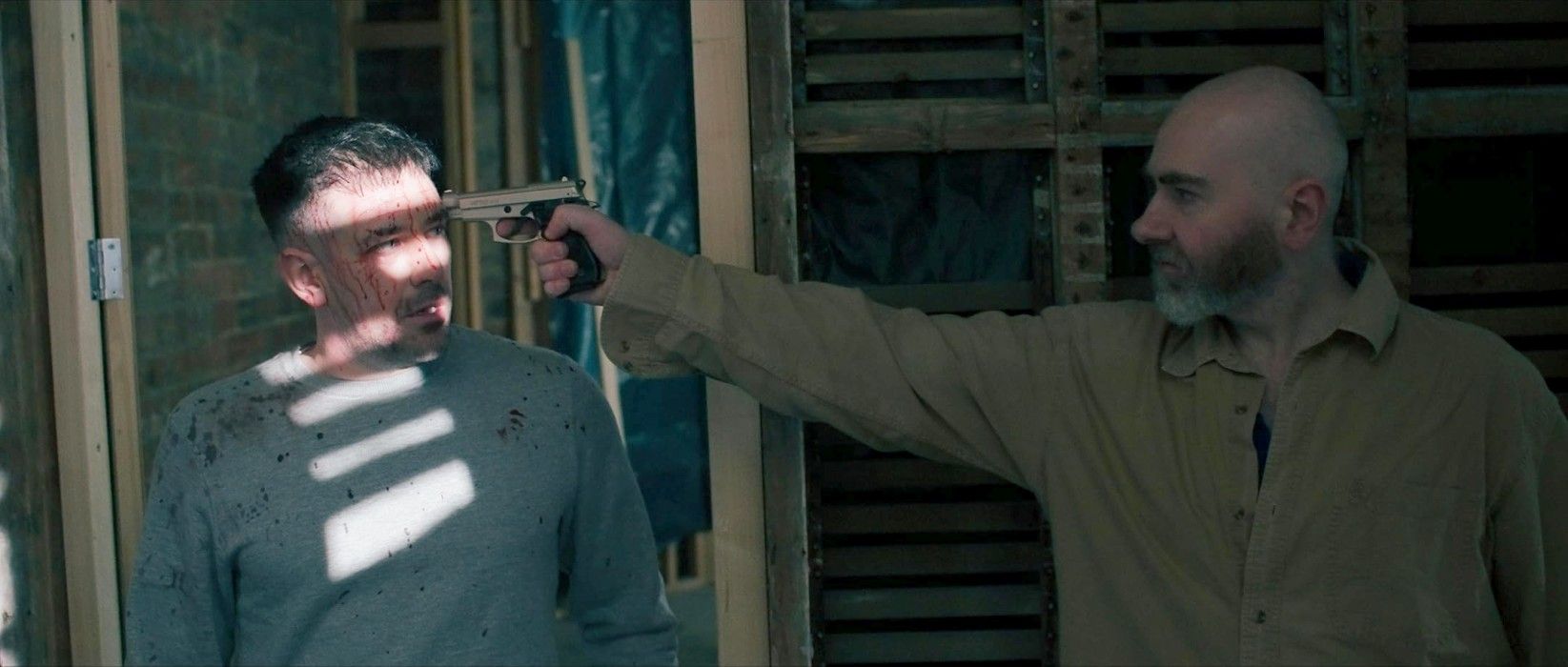
Dead Before They Wake (2025)
Rating: B
Dir: Andy Crane, Nathan Shepka
Star: Nathan Shepka, Grace Cordell, Manjot Sumal, Sylvester McCoy
Shepka’s most recent work, such as Lock & Load, has tended to be breezy action flicks, light in tone. This is definitely not. It’s closer to a Glaswegian riff on Taxi Driver, with its troubled protagonist navigating his way through the seediest of city underbellies, in order to rescue a young girl from sex traffickers. Alex (Shepka) is considerably more of a conventional hero than Travis Bickle – we first meet him rescuing a woman from getting raped in a back alley. But he’s very much a lone wolf, living by himself in a caravan, when not working as a bouncer. Outside of visits to his father’s care home, the only human contact is occasional visits by part-time hooker, Gemma (Cordell).
His relatively quiet life is upturned when he’s visit by retired lawyer Evan (McCoy), who offers Alex twenty thousand pounds to track down a missing girl, for reasons which… are a little shady. Alex is convinced to accept, and finds himself encountering some of the worst humanity has to offer, as he seeks to crack the ring run by Amar (Sumal). His ability to break heads certainly comes in handy there. However, Amar and his thugs are willing to hit back, operating under the control of the mysterious Mr. Holden (Patrick Bergin in an undeniably creepy supporting role). But there might be no enemy more dangerous than a man who has nobody to care about.
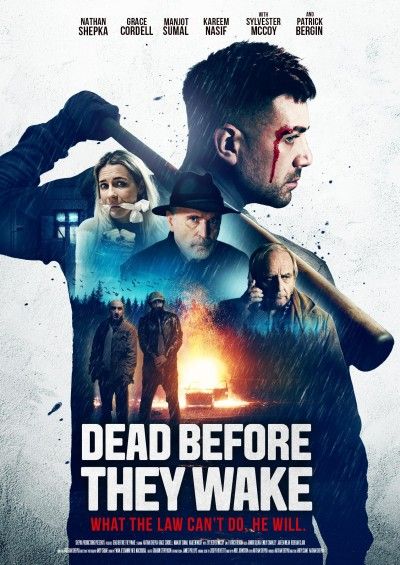 The scenario feels somewhat inspired by the hellish Rotherham scandal, though obviously heavily fictionalized and re-located to Glasgow. Still, it’s likely a story no big studio would ever consider, being just too problematic. The city often feels like a malevolent presence here, its darkness pulling the unwary in. Its a sensation which seems to ramp up the further in we go, with light and hope becoming hard to find, and death increasingly appearing to be the only way out. Yet it’s surprisingly nuanced at points, the script generally avoiding easy stereotypes. The paedophile Alex quizzes in Barlinnie Prison is almost sympathetic, and even Amar is weirdly protective of his own daughter, which backfires after one of her friends becomes a target for the ring.
The scenario feels somewhat inspired by the hellish Rotherham scandal, though obviously heavily fictionalized and re-located to Glasgow. Still, it’s likely a story no big studio would ever consider, being just too problematic. The city often feels like a malevolent presence here, its darkness pulling the unwary in. Its a sensation which seems to ramp up the further in we go, with light and hope becoming hard to find, and death increasingly appearing to be the only way out. Yet it’s surprisingly nuanced at points, the script generally avoiding easy stereotypes. The paedophile Alex quizzes in Barlinnie Prison is almost sympathetic, and even Amar is weirdly protective of his own daughter, which backfires after one of her friends becomes a target for the ring.
Not everything works: Gemma’s day-job as a teacher feels an unnecessary wrinkle, which adds little. Fortunately, more succeeds that fails, such as Alex’s dad being deaf, so they communicate in sign language. [Which comes in handy, since the girl he’s looking for, unexpectedly turns out to be deaf too] These scenes unfold in silence, Joe Renzetti’s score wisely knowing when to stay quiet. Shepka seems deliberately to be underplaying as Alex, and that’s likely a good thing. The other performances are a little less consistent, though I didn’t feel they hurt things too badly. There’s a point with about twenty minutes to go where I suddenly realized this was unlikely to end well. It’s all downhill from there for almost everyone, and the way this finishes is impressively grim. I’d just not expect an endorsement from the Glasgow Tourist Board.
The film is available in the US on January 7th, with the UK release on January 27th.
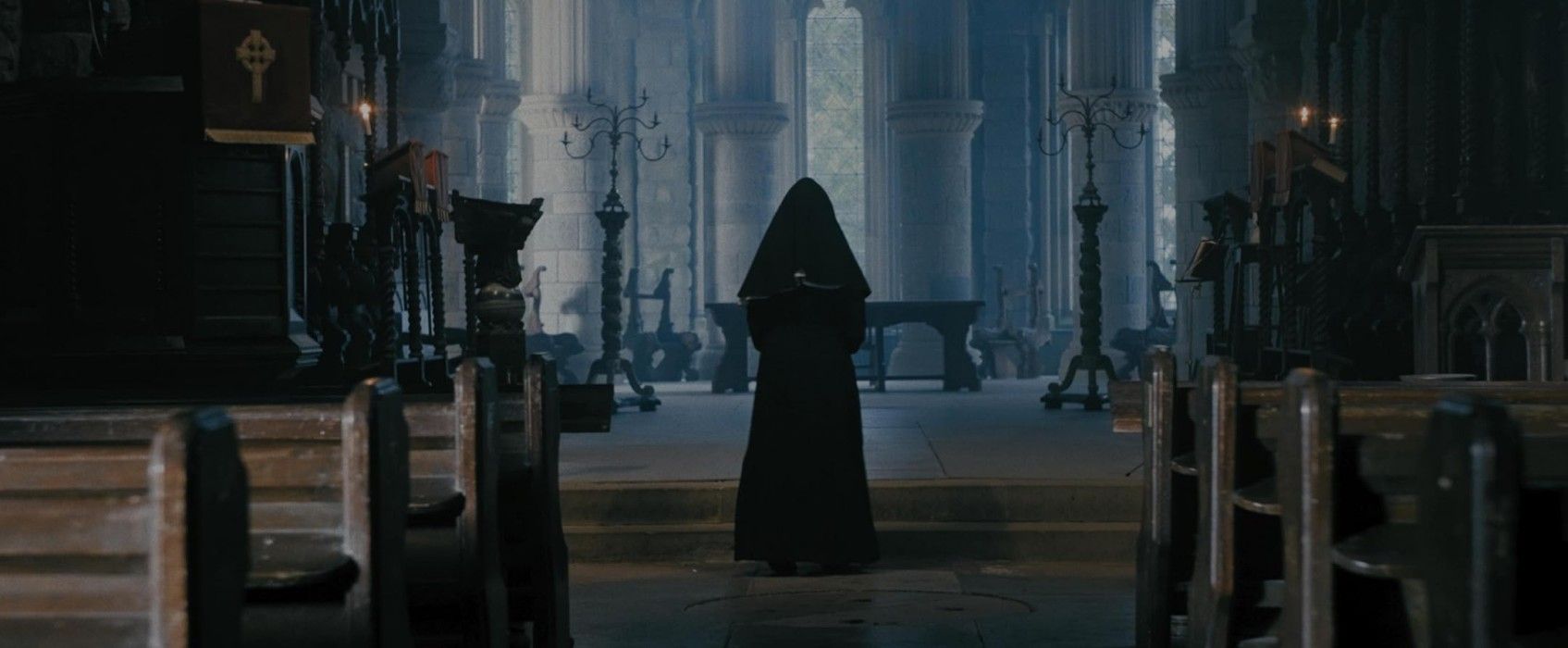
The Baby in the Basket (2025)
Rating: B-
Dir: Andy Crane, Nathan Shepka
Star: Michaela Longden, Amber Doig-Thorne, Maryam d’Abo, Nathan Shepka
This is another zig in direction from Shepka, whose Dead Before They Wake, reviewed less than a month ago, was a gritty urban thriller. Here, we get something totally different again. It’s a Gothic horror period piece, which takes place during World War II in a convent on an island off the coast of Scotland. I half-expect his next film to be a musical. Probably set in outer space. St Augustine’s is a rather troubled religious establishment, with a mere handful of nuns present under their Mother Superior (d’Abo). You get the feeling some don’t particularly want to be there, especially Eleanor (Longden), who barely seems to believe in Jesus Christ, never mind being his bride.
Things come to a head during a storm which has cut the island off from the mainland, when somebody still manages to leave the titular infant on the convent’s doorstep. One of the nuns, Agnes (Doig-Thorne), is almost immediately convinced of the infant’s malicious intent, which seems ludicrous to everyone else, and she believes the child must be destroyed. I guess that makes her a Sister of No Mercy, hohoho. Anyway, she’s locked up to keep her away from the baby. However, the escalating strange occurrences which follow, including the suicide of one sister, gradually convince the other nuns that Agnes might have a point. Except, the voices in her head have now made her very convinced that the infant needs to be protected, at any cost.
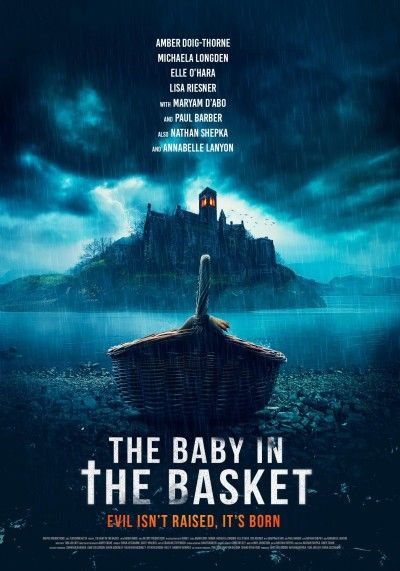 This feels like a throwback to those Satanic horrors which surged in popularity during the seventies, after the massive success of The Exorcist. This is far more understated, relying on largely successful efforts at generating brooding and oppressive atmosphere by the boatload. These are helped by some great locations, particularly St. Conan’s Kirk in Loch Awe, which really enhance the production value. In general though, the wartime setting doesn’t feel particularly significant. I kept expecting the PTSD suffered by young caretaker Daniel (Shepka), as a result of his previous military service, to prove more significant than it ended up being. More relevant is his lust, which provides an impetus for the film’ foray into nunsploitation, though outside of one scene, it’s relatively restrained in that department as well.
This feels like a throwback to those Satanic horrors which surged in popularity during the seventies, after the massive success of The Exorcist. This is far more understated, relying on largely successful efforts at generating brooding and oppressive atmosphere by the boatload. These are helped by some great locations, particularly St. Conan’s Kirk in Loch Awe, which really enhance the production value. In general though, the wartime setting doesn’t feel particularly significant. I kept expecting the PTSD suffered by young caretaker Daniel (Shepka), as a result of his previous military service, to prove more significant than it ended up being. More relevant is his lust, which provides an impetus for the film’ foray into nunsploitation, though outside of one scene, it’s relatively restrained in that department as well.
The performances are solid, with well-defined characters among the nuns – which is particularly important since they tend to look alike, in their penguin suits. Longden is reunited with her co-star from When Darkness Falls, Elle O’Hara, playing another nun. Eleanor is likely the best role, although we never do find out why she’s there. It felt like this may be related to the past of the Mother Superior, but I’d not worry about it. It’s interesting how Eleanor’s lack of faith might be her biggest strength. A bigger misstep might be a reveal towards the end, which I didn’t feel was necessary. The film was doing perfectly well with whispered voices and shadowy glimpses. As such, it might be closer to the spirit of Hammer. than anything Hammer have recently made.
The film is released in the US on February 3rd.
